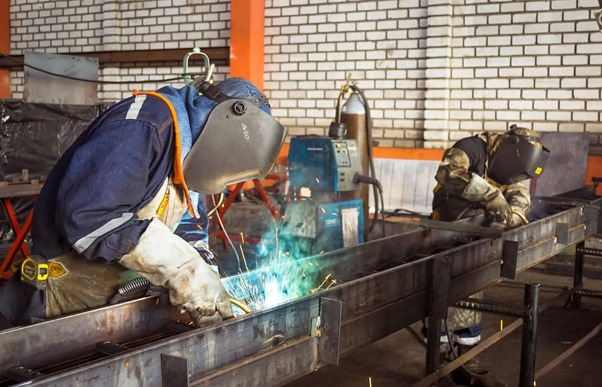Due to its high deposition rates, these properties make flux core welding wire an easy choice for many applications. Although there are many advantages to this process, issues can come up that will ultimately prevent welders from producing good quality and productivity. This article discusses some common issues with flux core welding wire and also several solutions to have an effective performance.
Note: Explore the finest silver welding wire with us! As an authorized dealer for leading professional brands, we offer the most extensive stock of welding supplies. Visit our website at https://www.udo.co.th/product/detail/0-champ ลวดเชื่อมเงิน to browse our products or get expert welding advice from our specialists. Don’t miss out on top-tier quality and unmatched availability in the market!
What is Flux Cored Welder Wire ##
Flux core welding wire is a consumable or in other words, flux cored arc welding can be both solid and flux-cored type. A hollow wire that has been feeded with a flux, when the contact tip melts and it makes a gas to protect the weld pool from contanimets. It is extremely useful for welding thicker materials and commonly employed in shipbuilding, construction or heavy equipment manufacturing facilities.
Do you have a flux cored wire problem?
### 1. Porosity
Pores or porosity – Little bubbles in the weld that look absolutely unprofessional and are also little weaknesses too. This often happens because of improper shielding, impurities and low setting during welding.
#### Solutions:
* Check Shielding Gas – Ensure that adequate shielding gas is supplied by the flux core welding wire. Higher Shielding Gas Usage: Make sure the gas flow rate is correct and constant
**The Base material should be cleaned:** Contamination such as oil, rust and dirt can also lead to porosity. Meticulously clean of all material before welding.
-Adjust parameters: check parameters in the welding machine (voltage settings, wire feed speed & travel speeds) to be within recommended range of flux core welding wire.
### 2. Spatter
More severe are spatter, the molten metal droplets that splatter from your weld pool and give a workpiece an unsightly appearance of dragon scales. It looks ugly and is extra to the few cleaning woes I have.
#### Solutions:
– Tune settings: Tweaking welding voltage and wire feed speed. If its set too high for the job you could end up with more spatter everywhere and this means your voltage, wire feed speed or both are not in balance.
Anti-Spatter Spray: Anti-spatter spray helps to avoid spattering on the workpiece and nozzle
Maintain equipment: The nozzle, contact tip and liner should also all be cleaned on a regular basis to prevent clogging and ensure consistent wire delivery.
### 3. Burn-Through
Burn-through is another challenge with welding flux cored wire, especially on thin gauge material.
#### Solutions:
Important points are – => Reduced Heat Input : Reducing the heat, you cast out burn-through and reduce voltage as well wire feed speed.
* The use of a backing bar, while relatively simple and often done using just pipe as back jack can provide both reinforcement & converse heat-essentially lowering the chances for burn-through.
-**Change Your Travel Speed: **Slowing or speeding up your travel might be a good way to control heat input while at same time avoiding over penetration.
### 4. Incomplete Fusion
Lack of fusion – weld metal not fusing properly to the base material and its previous passes, makes it weaker so that it may fail due to wrong pressure forces.
#### Solutions:
Joint Cleanness: The welding joint should be cleaned, clean possible so that the fusion will release correctly regarding its appropriate Bevel angle and gap.
– Proper Technique: Remember to zig-zag or oscillate your weld so the pool of melted solder fills up the complete region.
** Tune Parameters **: spread the welding voltage & wire feed speed out as far as they come to get good fusion.
### 5. Slag Inclusion
Slag inclusion-where flux or other non-metallic particles are trapped in the weld as it is formed, compromising structural integrity.
#### Solutions:
** Keep clean between passes ** Clean any slag off from the previous weld pass prior to putting down more layers.
**Welding Technique Optimization**: Establishment of Standard weld technique and optimization techniques will be practiced to dissolve slag effectively in the neat source pool.
Right type of Flux Core Welding Wire:- Last but not least, the welding wire making sure it is flux core and generally slag that comes out can be removed easily post weld cleanup.
## Conclusion
A lot of critical applications benefit from using flux core welding wire (mostly when MIG steel or basic alloys are being deposited). Because the cold characteristics with these products present some challenges in getting good welds, it is necessary to solve issues. Alternatively, by highlighting that the causes to porosity in molten wire welds (Cold Welding), spatter, burn-through and not enough silicone were within fusion as well object bead performance or slag entries etc. Solid-state high-frequency laser systems for repairing cast iron complex shapes (references! What we can do is increase productivity all while not losing sight of delivering high-quality services. However, the troubleshooting and solution for these challenges are what I have already suggested – in proper maintenance of equipment, correct parameter settings; along with sound welding techniques. Simply speaking, by understanding flux primary welding wire you will not only improve the quality of welds but in addition benefit from productive results for those other exercises that come with producing an excellent bead.
Wittyecho is not just a tool for humor; it’s a psychological marvel. Understanding the science behind it can enhance how we communicate. Humor is a powerful connector, bridging gaps between people. Wittyecho taps into this, creating meaningful and memorable interactions. Let’s delve into the psychology that makes Wittyecho effective.

